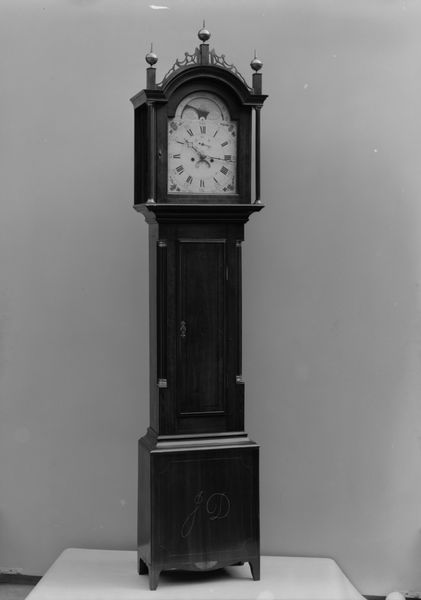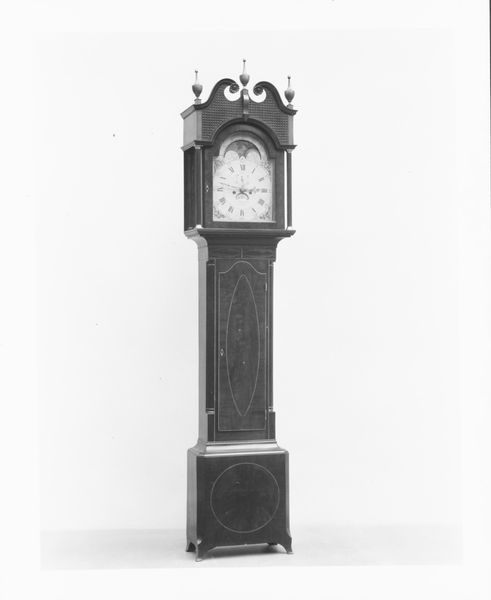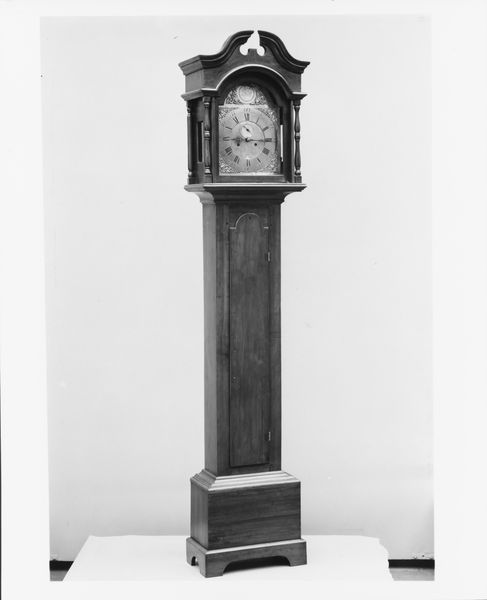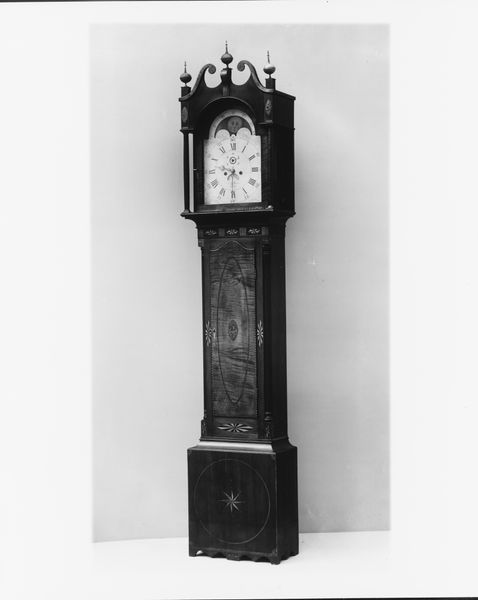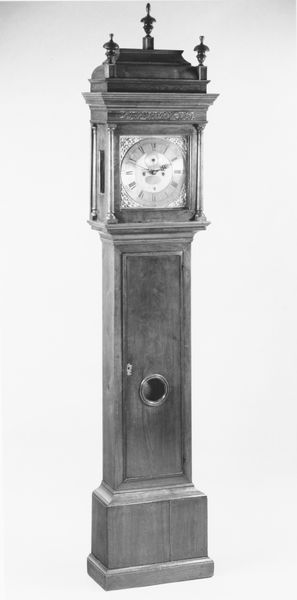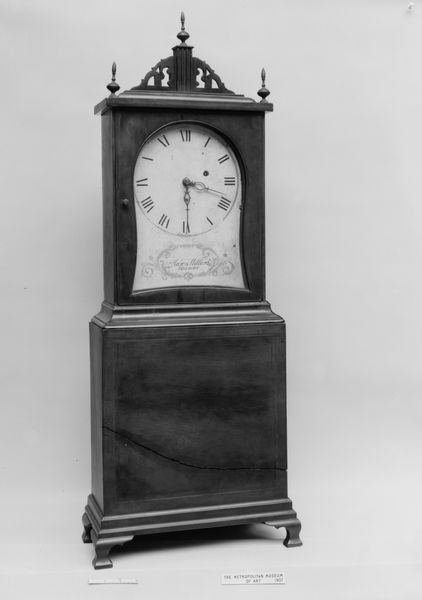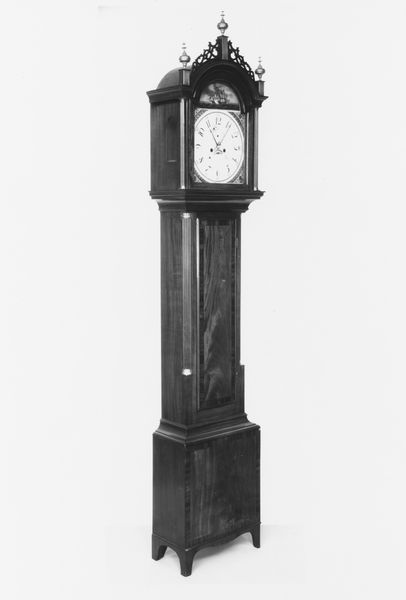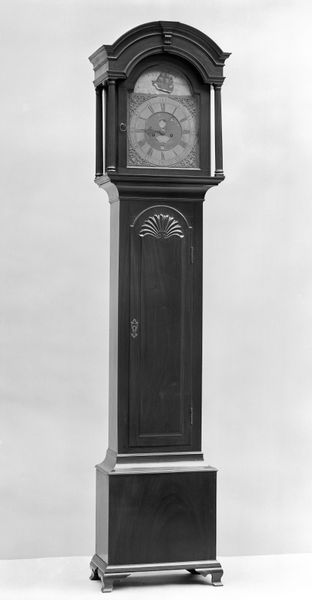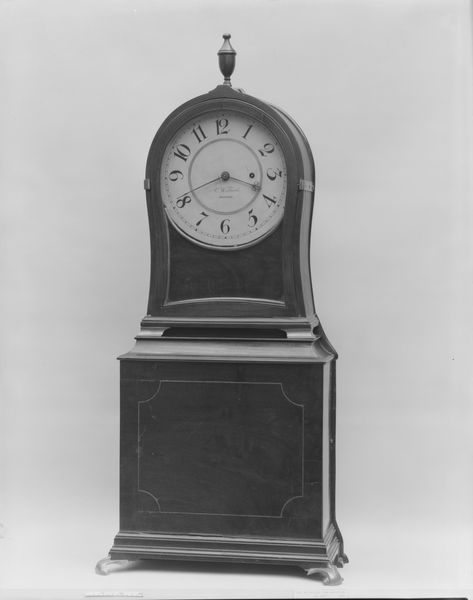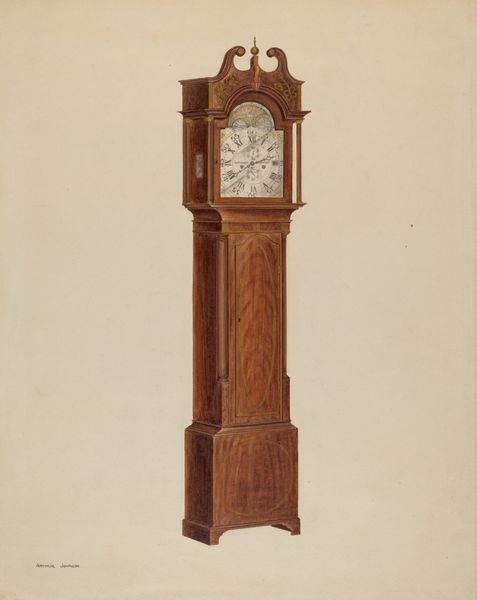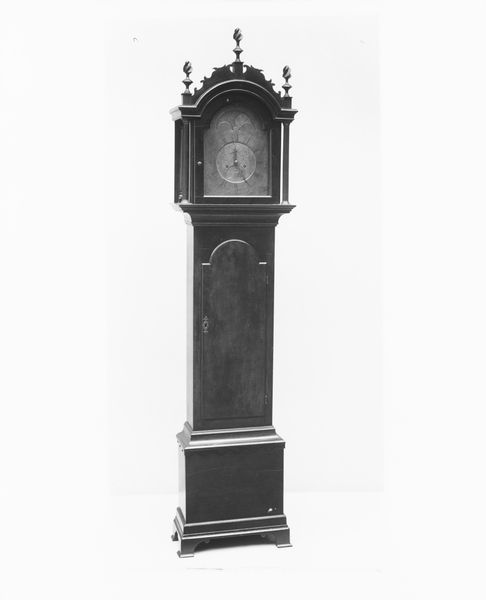
carving, sculpture, wood
#
neoclacissism
#
carving
#
sculpture
#
sculpture
#
black and white
#
wood
#
decorative-art
Dimensions: 105 x 22 x 11 3/4 in. (266.7 x 55.9 x 29.8 cm)
Copyright: Public Domain
Curator: The first thing that strikes me is the imposing scale of this piece. It stands so tall and regal, like some kind of austere monarch, guarding the secrets of time itself. Editor: Let's delve into this extraordinary object. What you're seeing is a "Tall Clock," crafted between 1767 and 1771. It resides here at the Metropolitan Museum of Art, and is attributed to William Huston. It’s predominantly wood, featuring incredible carving, exemplary of the Neoclassical movement's decorative art influence. Curator: Neoclassical, yes. I see echoes of that restrained elegance. But there’s also a weight, a somber quality. Maybe it's the monochrome palette that intensifies its presence. The fact that time is measured in this way—I keep thinking about how notions of temporality shift across historical moments and impact structures of labor and capital. Editor: Absolutely. It also invites considering time's intersectional impact—the differential value and experience of time based on one’s social position. These clocks, initially status symbols for the elite, played a critical role in standardizing time, and contributing to the construction of a regulated industrial workforce. One could explore the cultural implications embedded in decorative arts like these. Curator: Looking closely at the carved details – those finials, the delicate fretwork. It's a dialogue between meticulous craftsmanship and a larger narrative about power, surveillance, and the relentless march of "progress." And how it represents and reinforces those dynamics. The stark black and white adds to the serious vibe, no? Editor: Indeed. But, the artist, Huston—was also contributing to a craft tradition. And I can see a touch of whimsy at the top. Do you notice the little… well, I see them as crowns, personally, or stylized floral forms, like frozen bursts of organic life perched atop this symbol of measured time. Almost poking fun at our own seriousness, maybe. Curator: It almost softens its patriarchal grip, yeah. Time is money, sure, but also, life. This clock stands here ticking and reminding us to appreciate not only the time that is being commodified but also moments in which we reflect and question those systems. It certainly provokes conversation! Editor: It truly does, inviting a blend of respect for the past and a healthy questioning of its enduring shadows on the present. Curator: A worthwhile artifact for those curious to contemplate these ever present effects.
Comments
No comments
Be the first to comment and join the conversation on the ultimate creative platform.
